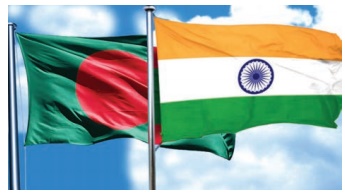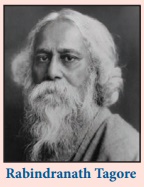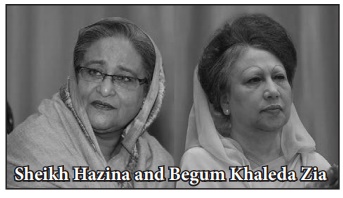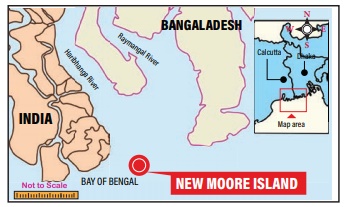Chapter: 12th Political Science : Chapter 10 : India and It’s Neighbours
India - Bangladesh Relations
India - Bangladesh Relations

Bangladesh is one of the most important neighbours
of India. Bangladesh is also a key partner to India in the South Asian region,
and is crucial both for stability in the north-eastern region and as a bridge to
South-East Asia. It is an important lynchpin to India’s ‘Look East’ policy.
In 1970, the Bengali Awami League Party won the
Pakistani National Elections. But West Pakistan refused to recognize the
election results and used brutal force to suppress the agitation by the Awami
League Party. This situation led to near war scenario, with armed east Bengalis
forming the Mukti Bahini (freedom force). India’s support to the Mukti Bahini
by training and the supply of arms, became imminent with millions seeking
refuge in India. Pakistan’s pre-emptive strike at India provided the Indian
army the much needed excuse to attack East Pakistan. By December 1971,
Bangladesh emerged as an independent state.

Establishment of a new state provided a chance for
India to have a friendly neighbor. In January 1972, Mujibur Rahman assumed
power as the Prime Minister of Bangladesh and his tenure happened to be one of
the best times in India – Bangladesh Relations. His tenure also witnessed the
signing of Indo-Bangladesh Friendship Treaty.

Historical Relations with Bangladesh
can be traced to the idea of India and Pakistan pre-dating 1947. The population
of both the countries share close and multi faceted socio-cultural,religious and linguistic ties. What is more, both
countries have a distinct honor of having their national anthem written by the
same poet ‘Rabindranath Tagore.’ The creation of Bangladesh with the support of
India, is a significant milestone in the history of South Asia.
Major Issues in Indo Bangladesh Relations
1. The Farakka Barrage: Of the various issues responsible
for deteriorating Indo-Bangladesh relations, commissioning Farakka dam in West
Bengal, about 11 miles from Bangladesh’s border, has perhaps attracted the most
International attention. India maintains that it needs the barrage for the
purpose of flushing the Hooghly River to make it free from silt and therefore
keep the port of Calcutta operational and also to meet the demand from Kolkata
for industrial and domestic use, and for irrigation purposes in other parts of
West Bengal. Despite the negotiations since 1970’s at both regional and
international levels, both the nations have still not been able to reconcile
with a proper solution.
2. Sharing of Teesta Water: The Teesta River
originates from Teesta Kangse glacier about 7,068 metres (23,189 ft.) height
and flows southward to Sikkim, West Bengal and Bangladesh. This river merges
with the Brahmaputra river when it enters Bangladesh and ends in the Bay of
Bengal. The dispute was started when West Bengal government began constructing
barrages on the river in 1979 mainly for irrigation purposes. The Bangladesh
Government opposed it and argued that the major rice producing areas of
Bangladesh, especially the ‘rice bowl’ Rangpur region lie in the Teesta and
Brahmaputra river basin. In 1983, an adhoc agreement on water sharing was
signed between both counties. Yet, being an upper riparian state, India has not
been able to supply the promised amount of water. Politically river water
sharing continues to haunt both the countries.
3. New Moore Island or South Talpatti (Known in Bangladesh): New Moore Island is a small uninhabited
offshore sandbar landform in the Bay of Bengal, off the coast of the Ganges-Brahmaputra
Delta region. It emerged in the Bay of Bengal in the aftermath of the Bhola
cyclone in 1970, and disappeared at some later point. For nearly 30 years,
India and Bangladesh have argued over control of a tiny rock island in the Bay
of Bengal but later in 2010 the rising sea levels have resolved the dispute for
them as the island was submerged. New Moore Island, in the Sunderbans, has been
completely submerged, Its disappearance has been confirmed by satellite imagery
and sea patrols. Scientists at the School of Oceanographic Studies have noted
an alarming increase in the rate at which sea levels have risen over the past
decade in the Bay of Bengal. Although the island was uninhabited and there were
no permanent settlements or stations located on it, both India and Bangladesh
claimed sovereignty over it because of speculation over the existence of oil
and natural gas in the region.
The
Resolution: In Permanent Court ofArbitration(PAC)thedisputewassettled in July 2014 by a final
verdict not open to appeal and in favour of Bangladesh. The Permanent Court of
Arbitration (PCA) verdict awarded Bangladesh with 19,467 km2 out of 25,000 km2
disputed area with India in the Bay of Bengal. However New Moore Island has
fallen in India’s part of the Bay of Bengal.

India- Bangladesh Border
India and Bangladesh have a 2,979 km
land border and 1,116 km of riverine boundary. They also share 54 common
rivers, including the Brahmaputra. India’ s West Bengal, Meghalaya, Mizoram,
Assam and Tripura share 4,096 km border with Bangladesh.
Tripura and other northeastern states
are surrounded by Bangladesh, Myanmar,Bhutan and China on three sides and the
only land route access to these states from within India is through Assam and
West Bengal by Siliguri or the Chicken’s Neck Corridor.
4. Chakmas Refugees Issue: The Chakmas and Hajongs living in
the Chittagong Hill Tracts fled erstwhile East Pakistan in 1964-65, since they
lost their land to the development of the Kaptai Dam on the Karnaphuli River. In
addition, they also faced
religious persecution as they were non-Muslims and did not speak Bengali. They
eventually sought asylum in India. The Indian government set up relief camps in
Arunachal Pradesh and a majority of them continue to live there even after five
decades. According to the 2011 census, 47,471 Chakmas live in Arunachal Pradesh
alone.
5. Border Issue: Bangladesh and India share a common border
of 4096 km running through five states, namely, West Bengal, Assam, Meghalaya,
Tripura and Mizoram. There are 162 enclaves between Bangladesh and India. The
border regions have emerged as a major transit point for smugglers of
contraband goods, human traffickers and terrorist and insurgent groups living
near the border. Hence, border management has become a major challenge for both
countries.
Through negotiation between India and Bangladesh 50
enclaves were transferred to India and 111 transferred to Bangladesh. While the
border issue is sorted to a great extent, through related issues like illegal
arms smuggling, human trafficking,drug trafficking and cross border terrorism
continue to haunt India and Bangladesh.
Trade and Connectivity
·
Trade has been growing steadily between the two countries
at about 17% in the last 5 years.
·
A bus service and a train service between Kolkata
and Dhaka was also launched.
·
Memorandam of Understanding (MoU) has been signed
on the development of Ashuganj-Zakiganj stretch of Kushiyara river and
Sirajganj-Daikhawa stretch of the Jamuna river to improve connectivity between
the two countries and this will help reduce cost of cargo movement to northeast
India and also reduce congestion through the Siliguri’s ‘Chicken’s Neck’
corridor.
·
Connectivity is an issue of mutual interest as
these initiatives on passenger and goods trains will be of benefit to both
Bangladesh and northeast India.
·
Dhaka also has the central role in shaping the
future of sub-regional cooperation with Bhutan, Burma, India and Nepal. It is also
a land bridge to East Asia and the fulcrum of a future Bay of Bengal community.
·
However, the most important issue in contemporary
Asian geopolitics is transit and connectivity. In 2016 when Chinese President
Xi Jinping visited Bangladesh, it agreed to join the Belt and Road Initiative
(BRI).
·
China is already investing in a number of
infrastructure projects in the country including the deep sea port at
Chittagong. It is likely that these projects will now be subsumed under the BRI
project which is the matter of concern for India.
Energy Cooperation
·
Energy cooperation between the two sides has also shown
a lot of positivity with Indian state Tripura supplying a total of 160 MW of
power to Bangladesh in addition to the 500 MW the country is receiving from
West Bengal since 2013.
·
Bangladesh has sought extra 100 MW electricity from
India to solve its power crisis, and will be likely on the negotiating table.
Defence Cooperation
·
There are talks that a defence treaty is to be
signed between India and Bangladesh, it will be a long-term defence deal that
will allow for increased defence cooperation, information sharing, joint
exercises, training and so on. However, India needs to figure out where it can
meet Bangladesh’s security concerns, considering Bangladesh’s largest defence
partner is China.
·
Expanding security cooperation with India could
only enhance Dhaka’s global leverage. For India, a strong partnership with
Bangladesh will help boost the prospects of peace and prosperity in the eastern
subcontinent.
·
Defence deal between the two nations on the basis
of sovereign equality and geopolitical realities will take us a long way ahead.
The India-Bangladesh relations can be summarised as
hanging on three ‘T’s – 1. Tackling Terrorism, 2. Trade + Transit and 3. Teesta
Treaty. we should hope to resolve the issues and take the relationship forward
so that the growing mutual trust and political comfort between Delhi and Dhaka
will have a long-term consequence. It is important for India’s North-East as
well.
Related Topics